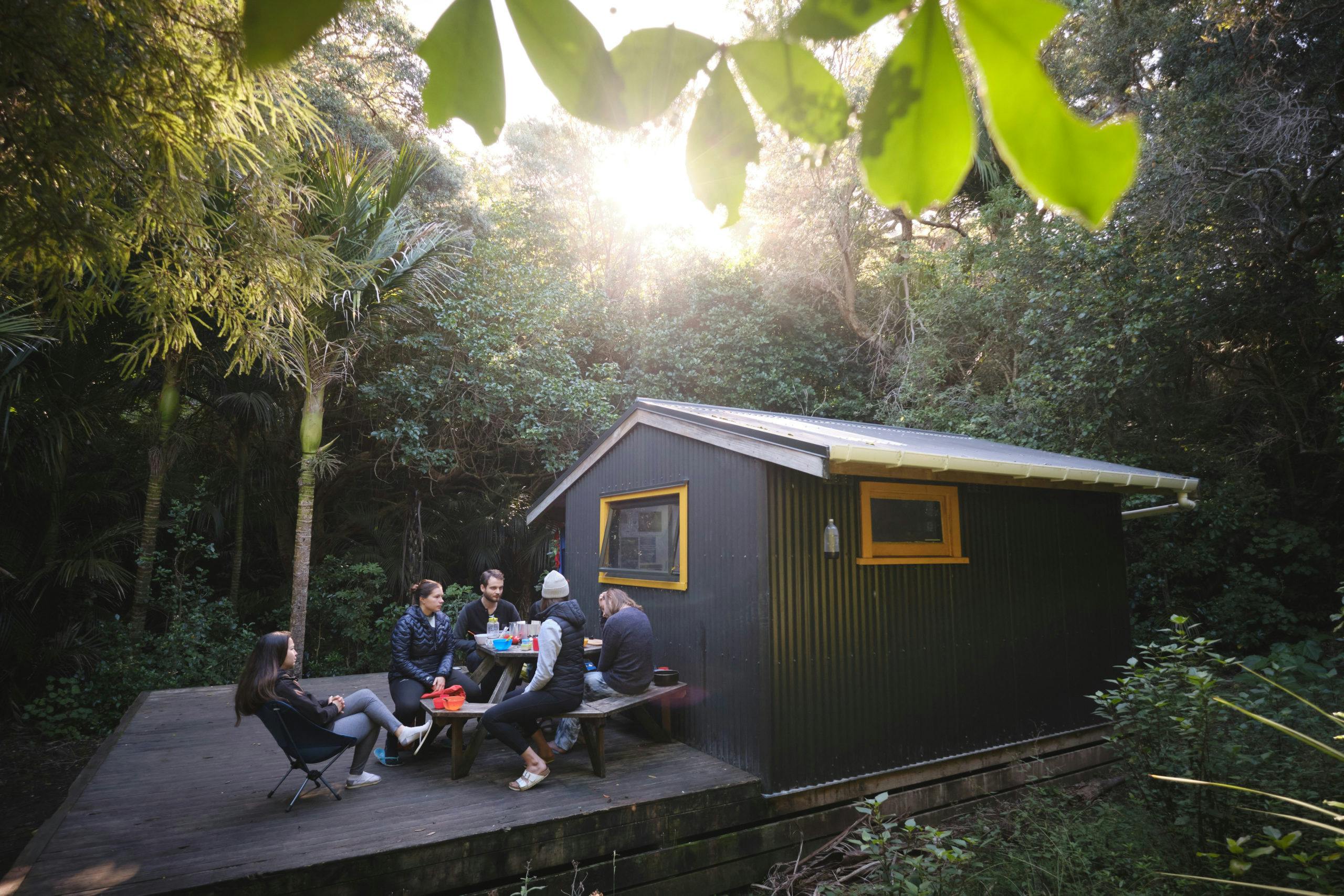A wrap of the biggest stories and best writing about the outdoors from New Zealand and around the world.
Bookings for the 2021/21 season opened for DOC huts and campsites yesterday, with a price hike for some popular facilities.
This includes differential pricing for international visitors on seven Great Walks, the introduction of weekend pricing for DOC’s most high-use huts and the extension of seasonal pricing.
Seven of DOC’s Great Walks are increasing in price, including Milford Track where hut prices will jump from $70-78.
Popular huts due for a price increase include Brewster Hut, Waitawheta Hut, Woolshed Creek hut, and Pinnacles Hut in Coromandel Forest Park.
“This year’s changes allow for a more nuanced approach to price-setting and have been designed to improve cost recovery,” DOC’s Steve Taylor said.
“Many of them offer incentives to visit lesser-known locations or at quieter times to protect places and people’s enjoyment of them. Weekend, seasonal and differential pricing are expected to make a positive difference, but we’ll be monitoring the effectiveness of this approach.”
Bookings for Otago huts and campsites opened yesterday, with all remaining South Island huts and campsites becoming available on May 13.
All North Island huts campsites follow on May 14, with Great Walk bookings staggered over June 15-17.
See the full list of price changes here.
MSC launches planning app
MSC’s tramp-planning app Plan My Walk has launched.
The free app, thought to be a world-first, includes more than 1000 DOC tracks, MetService weather forecasts and severe weather warnings, track specific alerts, interactive gear lists and other planning advice.
MSC chief executive Mike Daisley said the app will help Kiwi trampers plan safe adventures.
“We are really confident there is a need for this type of app and that it will make a difference,” Daisley said.
Users will be able to leave track reviews and comment on track conditions, as well as share their trip intentions and plans with others.
“Our research indicated that it was really important that users could share intel with others because this type of advice can be some of the most helpful when users are planning,” Daisley said.
Find out more here.
Rab launches down collect and recycle scheme
British brand Rab has started its own down collect and recycle scheme, which may soon come to New Zealand.
The scheme is part of the brand’s ongoing sustainability strategy and commitment to reach Net Zero by 2030.
Consumers will be invited to bring worn down products to the service, which will be washed, treated and used for new technical products.
If the scheme is successful, Rab intends to expand the service globally.
“We are happy to take yet another step towards a more sustainable business and to be among the leaders in the outdoor industry,” Rab’s Debbie Read said.
Is there an equation for the perfect snack?
Outside author Ryan Wichelns has spent two years trying to search for the perfect hiking snack.
The quest led him to build an extensive spreadsheet and develop an equation to rate the efficiency of each snack.
“I began logging every snack I’d taken hiking, climbing, skiing, backpacking, and more into a massive spreadsheet I called the Snack Tracker 1000,” he writes.
“Along with the name and flavour of the product and a rating based on how much I enjoyed eating it, I would input details from the wrapper: a pile of nutrition facts and the weight of the product. And then I let Google Sheets do its best Jonah-Hill-in-Moneyball impression to spit out a final Snack Value Rating.”
Wichelns says energy bars like Clif topped his list due to impressive carb to protein ratios. “Also high on the list are various different chocolate and candy bars like Snickers and Twix, with a grocery store brand 70 per cent cacao bar taking the cake. Chocolate like that is particularly calorie-dense and has enough protein (from dairy, and nuts in the case of a Snickers bar) to score well.
At the bottom of Wichelns list are protein-heavy products like jerky and meat sticks, which score poorly largely because of their overzealous protein content.
Read the story here.
Te Paki Track reopens
Te Paki Track has reopened after sightings of feral dogs closed it last month.
DOC’s Meirene Hardy-Birch said there were concerns the dogs would attack and harm visitors, and were a risk to native wildlife.
“In the last four weeks we have worked with the adjoining farm and facilities manager and have done physical surveillance, trail cameras and traps,” she said.
“A review of the physical surveying and footage captured by the cameras has shown no evidence of the dogs on the tracks which triggered the closure, so the tracks have reopened to the public.”
DOC asks visitors to remain vigilant, and report any sightings to Far North District Council on 0800 920 029.
Sunrise Hut receives upgrade
Sunrise Hut and Sunrise Track have reopened following renovations and improvements.
The hut was painted by volunteers over four days in February, organised and funded by the Backcountry Trust and a local community group with support from DOC.
Work on the track reinstated eroded tracks, improved the surface and reduced the chance of standing water with 16 new culverts and 369m of side drains.
“The hut is looking smart with its new paint, and the improvements last year include a new fireplace, a heat transfer system and refurbished interior painting. The track improvements will allow visitors to focus on the sights and sounds while accessing this great part of the country,” DOC’s Shaun Ruddle said.







